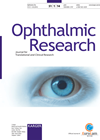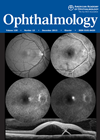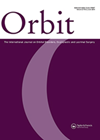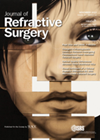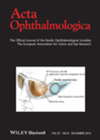
Journal Reviews archive for 2014
Diabetic retinopathy and body fat distribution and adipokine secretion in type 2 diabetics
The major risk factors for diabetic retinopathy (DR) in patients with diabetes are poor glycaemic or blood pressure control, duration of diabetes and nephropathy related to the severity of DR. Several studies suggest that DR is associated with visceral fat...
Complement Factor H and Factor H-Like protein are expressed in human RPE cells
The role of inflammation in age-related macular degeneration (AMD) is well documented and the association of AMD with the inflammatory marker C-reactive protein (CRP) and members of the complement system underline the role of complements in AMD. Human complement factor...
Therapeutic ocular surface medium for persistent corneal epithelial defect
Corneal ulcers and persistent epithelial defects (PEDs) are caused by a variety of different insults to the cornea, which includes limbal epithelial stem cell failure. PED may be resistant to healing with standard therapy such as frequent ointments and /...
Randomised trial of multifocal intraocular lens versus monovision
The authors report on a randomised, multicentre clinical trial comparing the outcomes of Tecnis ZM900 diffractive multifocal intraocular lenses (IOL) versus monovision with Akreos AO monofocal IOL (dominant eye targeted for emmetropia and non-dominant eye targeted for -1 to -1.50...
Prognosticating ocular adnexal lymphoma
The authors retrospectively analyse 160 patients with primary ocular adnexal lymphoma to determine the accuracy of prognosis based on the Ann Arbor classification and how this compares to the accuracy of prognosis based on retrospectively applying the newer Tumor, Node,...
A retrospective study of the use of Dermis Fat Grafts for orbital volume augmentation
The authors describe the outcomes of 173 primary Dermis Fat Grafts (DFGs) and 66 secondary DFGs. Median follow-up for the primary group was 21.5 months and 14 months for the secondary group. Outcome measures included: prosthesis motility, prosthesis fit, patient...
Clinical course of vitreomacular adhesion managed by initial observation
The purpose of this study was to investigate the clinical course of patients with idiopathic vitreomacular adhesion (VMA) with a noncomparative case series of patients who had clinical symptoms and spectral-domain optical coherence tomography findings consistent with VMA. The VMA...
TAC testing in dementia
The aim was to assess the visual acuity measurements performed by the preferential looking method using Teller acuity cards (TAC) in elderly subjects with dementia due to probable Alzheimer’s disease. The mean age was 78.2±9.11 years for patients and 77.2±6.19...
Autistic responses to plusoptix photoscreening
The authors sought to determine if the plusoptix would provide an accurate estimation of whether an autistic child had amblyopic risk factors. This retrospective study identified 48 children with autism. Undilated plusoptix was undertaken in 25 children aged less than...
BV after long-standing exotropia
Pre and postoperative binocular vision (BV) was compared in long-standing large angle exo deviations. The purpose was to determine the BV potential in these cases and particularly for those at risk of postoperative paradoxical diplopia. In this retrospective study patients...
Two bifocals and a trifocal
The authors compare the optical outcomes of two bifocal intraocular lenses (AcrySof ReSTOR +2.50 Diopter [D] add +3.0D add) with a trifocal lens (AT LISA tri 839MP). The optical qualities of the lenses were quantified by measuring the modulation transfer...
Visual impairment in patients with glaucoma
This retrospective observational study assessed the prevalence of end-of-life visual impairment in patients with glaucoma. A total of 122 deceased patients followed for glaucoma were included and data was collected from patient notes. Sixty-one patients had open-angle glaucoma and 61...

